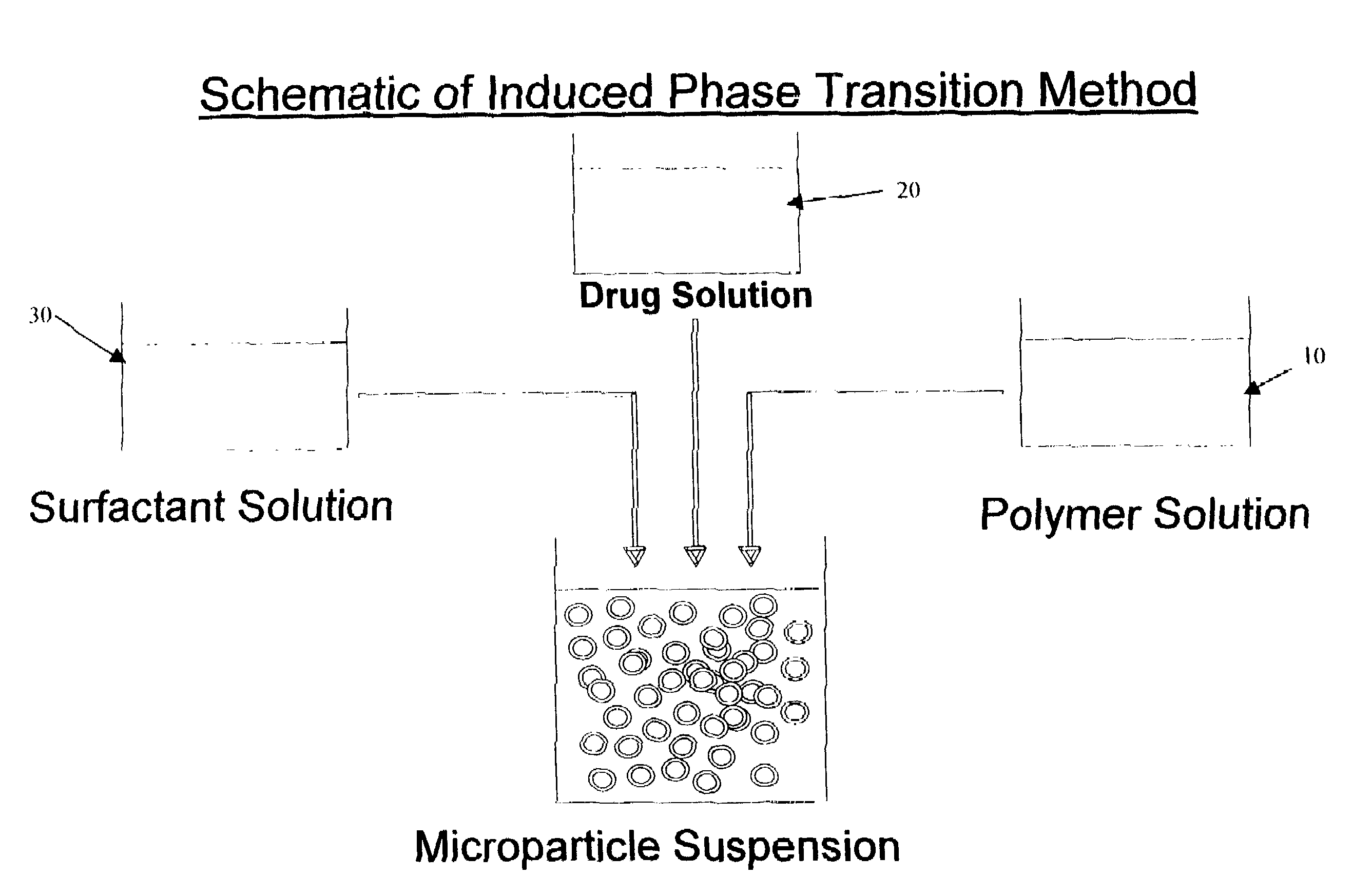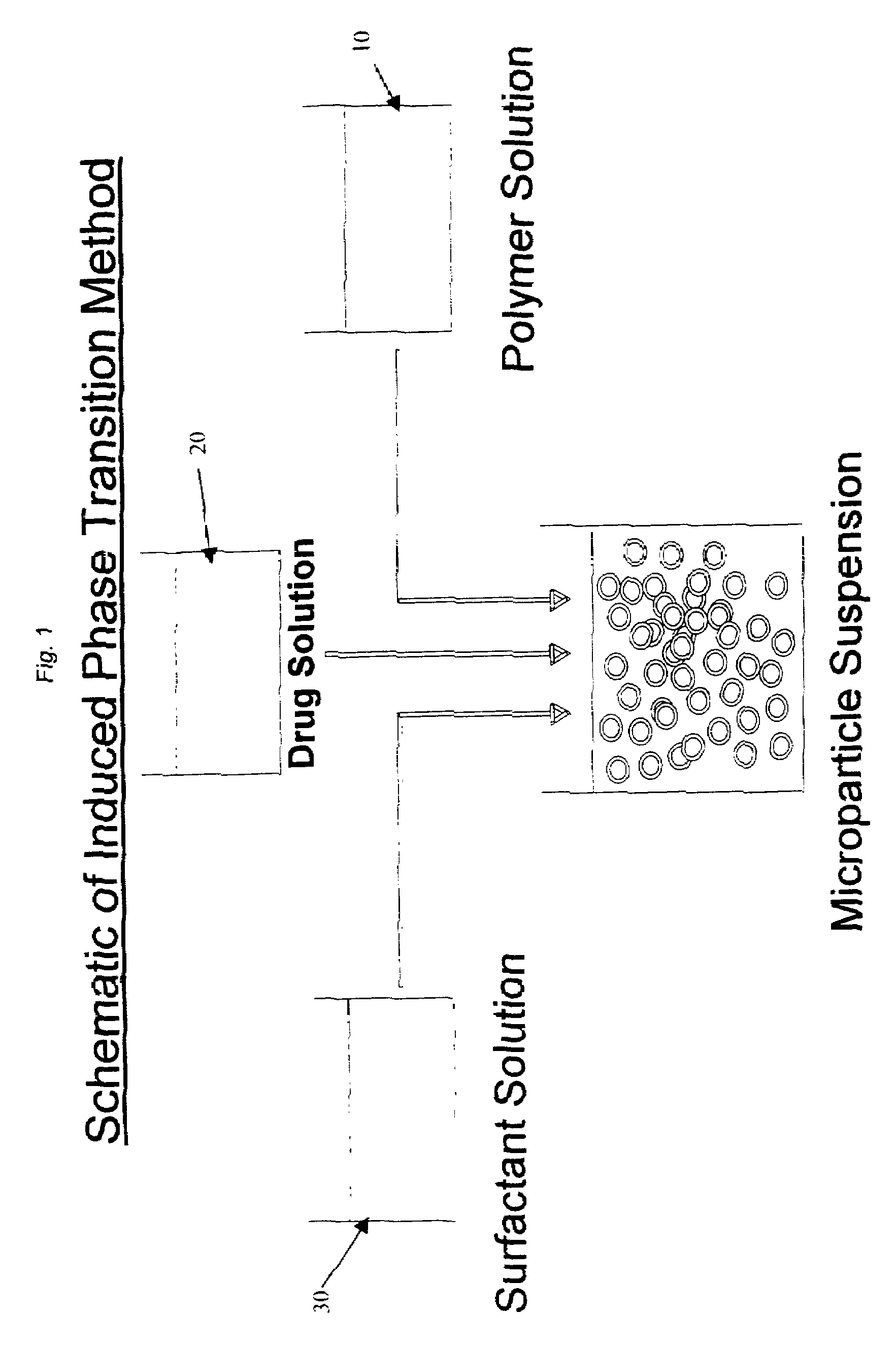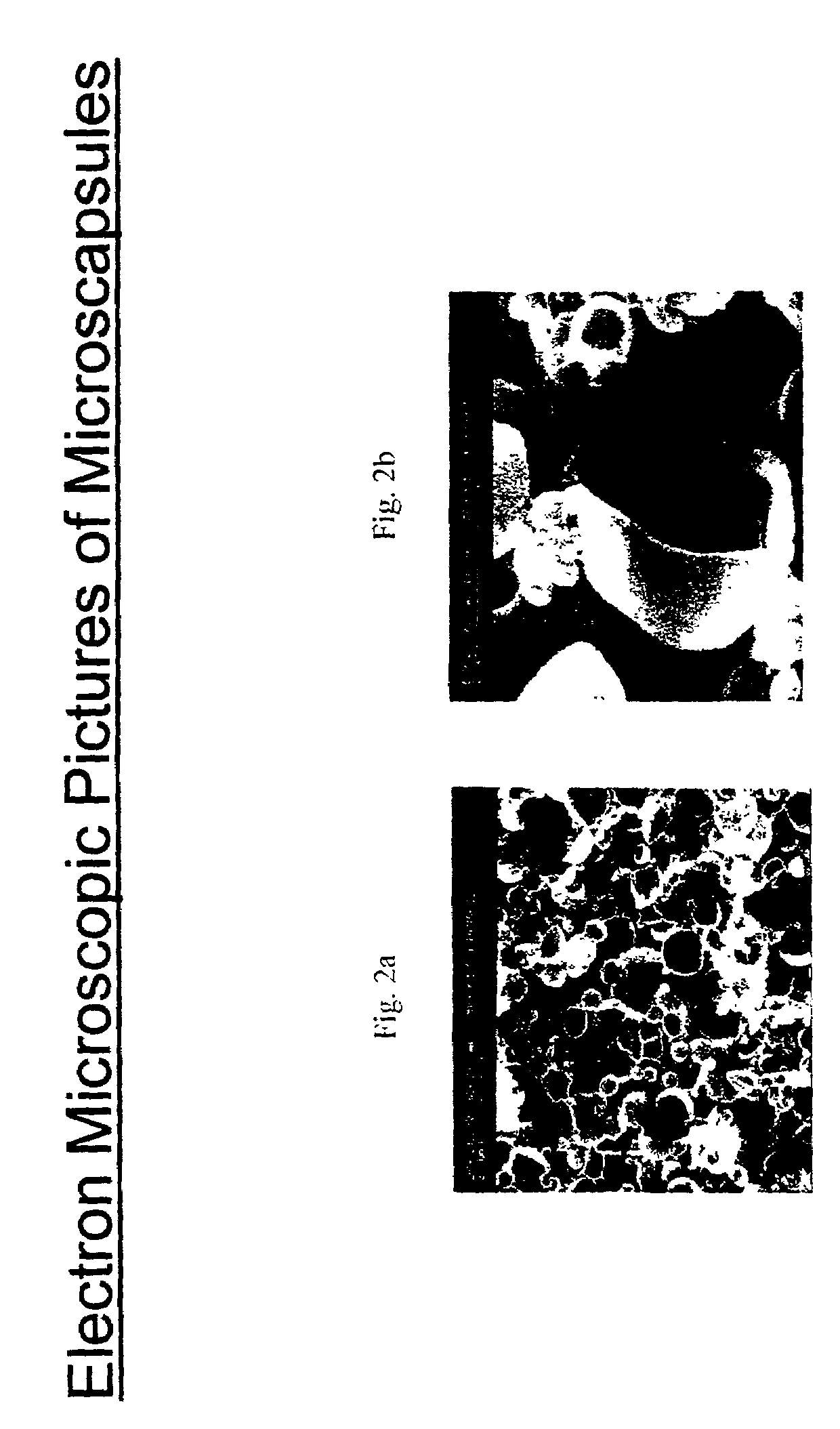Induced phase transition method for the production of microparticles containing hydrophilic active agents
a technology of hydrophilic active agents and phase transition methods, which is applied in the field of induced phase transition methods for the production of microparticles containing hydrophilic active agents, can solve the problems of protein large molecules that cannot be administered, protein efficacy is strongly restricted, and bioavailability is strongly compromised, so as to achieve simple and mild, the effect of reducing production tim
- Summary
- Abstract
- Description
- Claims
- Application Information
AI Technical Summary
Benefits of technology
Problems solved by technology
Method used
Image
Examples
example 1
[0086]750 mg of the polymer Resomer® RG-756 is dissolved in 15 mL ethyl acetate and transferred to a double-walled steel vessel (inside height 11.0 cm, inside diameter 4 cm). 5 mL of an aqueous 200 mg HSA (human serum albumin)-containing, 5 mmol Tris(hydroxymethyl)aminomethane solution (pH 7.4) is then dispersed by means of a mechanical agitator (Dispermat FT, VMA-Getzmann GmbH, 2 cm dissolver disk) in the polymer solution for 3 minutes at 10,000 rpm at room temperature. 50 mL of a 4% Pluronic® F68 surfactant (which comprises block copolymers based on ethylene oxide and propylene oxide) solution in water is then added as continuous phase during agitation (10,000 rpm). After about 30 seconds of agitation, the microparticle suspension is transferred to a 500 mL two-necked flask and agitated with a magnetic stirrer. The solvent ethyl acetate is then eliminated at room temperature by applying a vacuum or by extraction with water. After 2 hours, the suspension is washed with 6 of water o...
example 2
[0090]750 mg of the polymer Resomer® RG-858 is dissolved in 15 mL ethyl acetate and transferred to a double-walled steel vessel (inside height 11.0 cm, inside diameter 4 cm). 5 m / L of an aqueous 50 mmol PBS buffer solution (pH 7.4) containing 100 mg HSA (human serum albumin) is then dispersed in the polymer solution for 3 minutes at 10,000 rpm by means of a mechanical agitator (Dispermat FT, VMA-Getzmann GmbH, 2 cm dissolver disk).
[0091]50 mL of a 4% Pluronic F127 solution in water is then added as continuous phase during agitation (10,000 rpm). After about 30 seconds of agitation, the microparticle suspension is transferred to a 500 mL two-necked flask and agitated with a magnetic stirrer. The microparticle suspension is further processed as in Example 1.
[0092]The lyophilizate, resuspended with water or an aqueous solution, contains microcapsules with a human serum albumin content of 10% (human serum albumin weight×100 / human serum albumin weight+polymer weight=degree of loading) an...
example 3
[0093]Polymer: RG-858, employed amount: 750 mg polymer is dissolved in 15 mL of the solvent listed in Table 1. Surfactant solution: volume: 50 mL, 2 g of the surfactant listed in Table 1 is dissolved in 50 mL of water.
[0094]HSA solution: 10 mg HSA is dissolved in 5 mL of a 10 mmol Tris(hydroxymethyl)aminomethane solution (pH 7.4).
[0095]Microcapsules loaded with HSA were produced from the components listed in this example according to the method described in Example 1. The lyophilizate, resuspended with water or with an aqueous solution, contains microcapsules with a diameter from 0.2 to 15 μm.
[0096]
TABLE 1T-707T-908Tween-80F-68F-127P-1570L-1695Methyl acetateEthyl acetateIsopropyl acetateEthyl formatePropyl formateIsopropyl formateEthyl methyl ketone
[0097]The encapsulation efficiency in all the charges listed in Table 1 is at least 85%.
PUM
| Property | Measurement | Unit |
|---|---|---|
| diameter | aaaaa | aaaaa |
| diameter | aaaaa | aaaaa |
| diameter | aaaaa | aaaaa |
Abstract
Description
Claims
Application Information
 Login to View More
Login to View More - R&D
- Intellectual Property
- Life Sciences
- Materials
- Tech Scout
- Unparalleled Data Quality
- Higher Quality Content
- 60% Fewer Hallucinations
Browse by: Latest US Patents, China's latest patents, Technical Efficacy Thesaurus, Application Domain, Technology Topic, Popular Technical Reports.
© 2025 PatSnap. All rights reserved.Legal|Privacy policy|Modern Slavery Act Transparency Statement|Sitemap|About US| Contact US: help@patsnap.com



